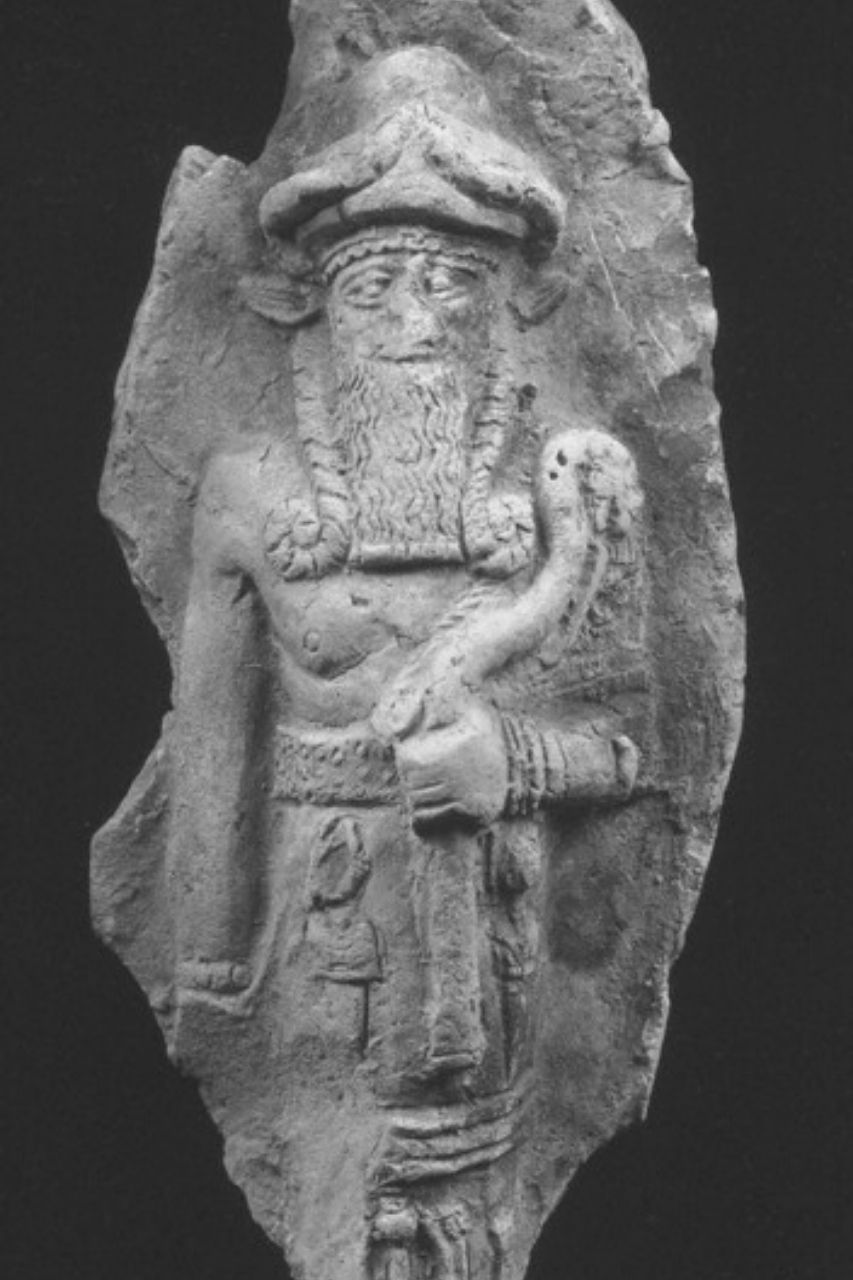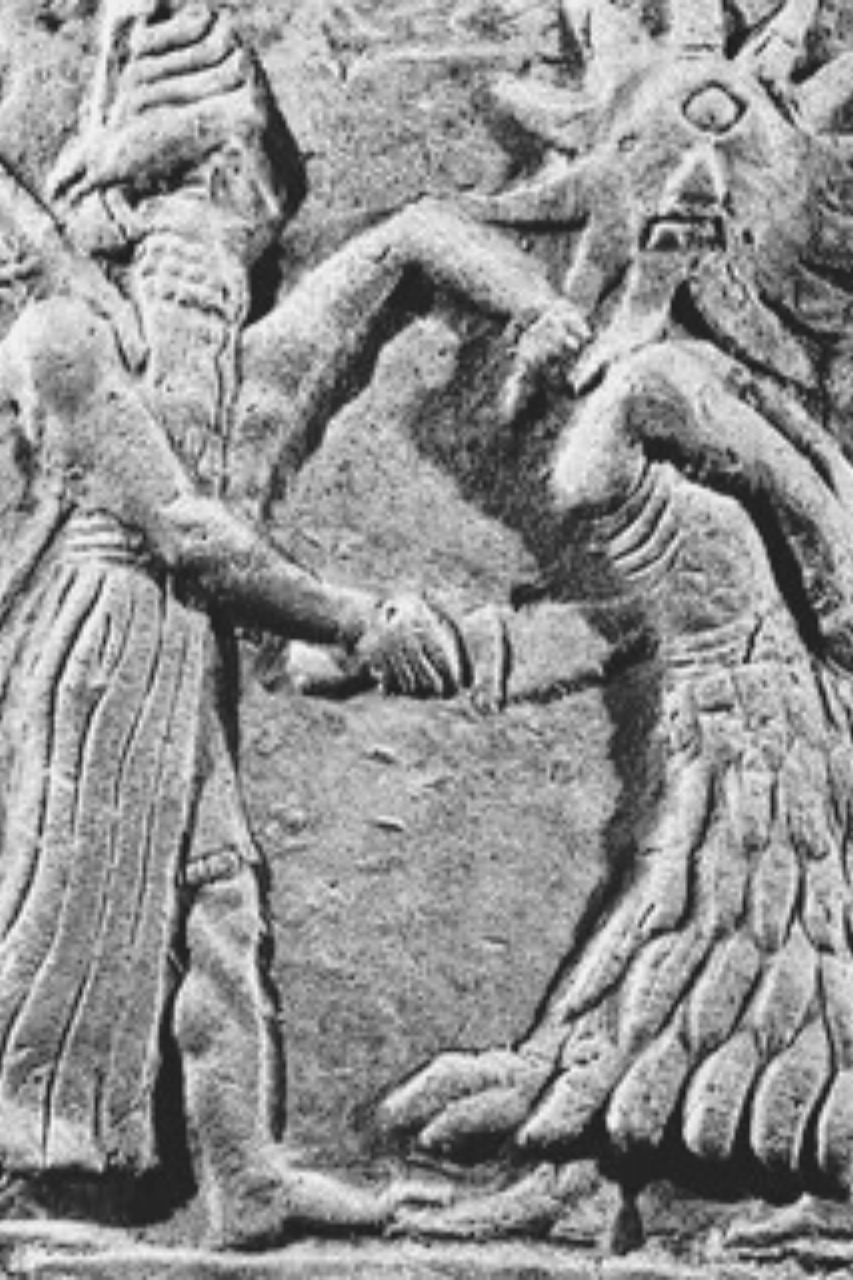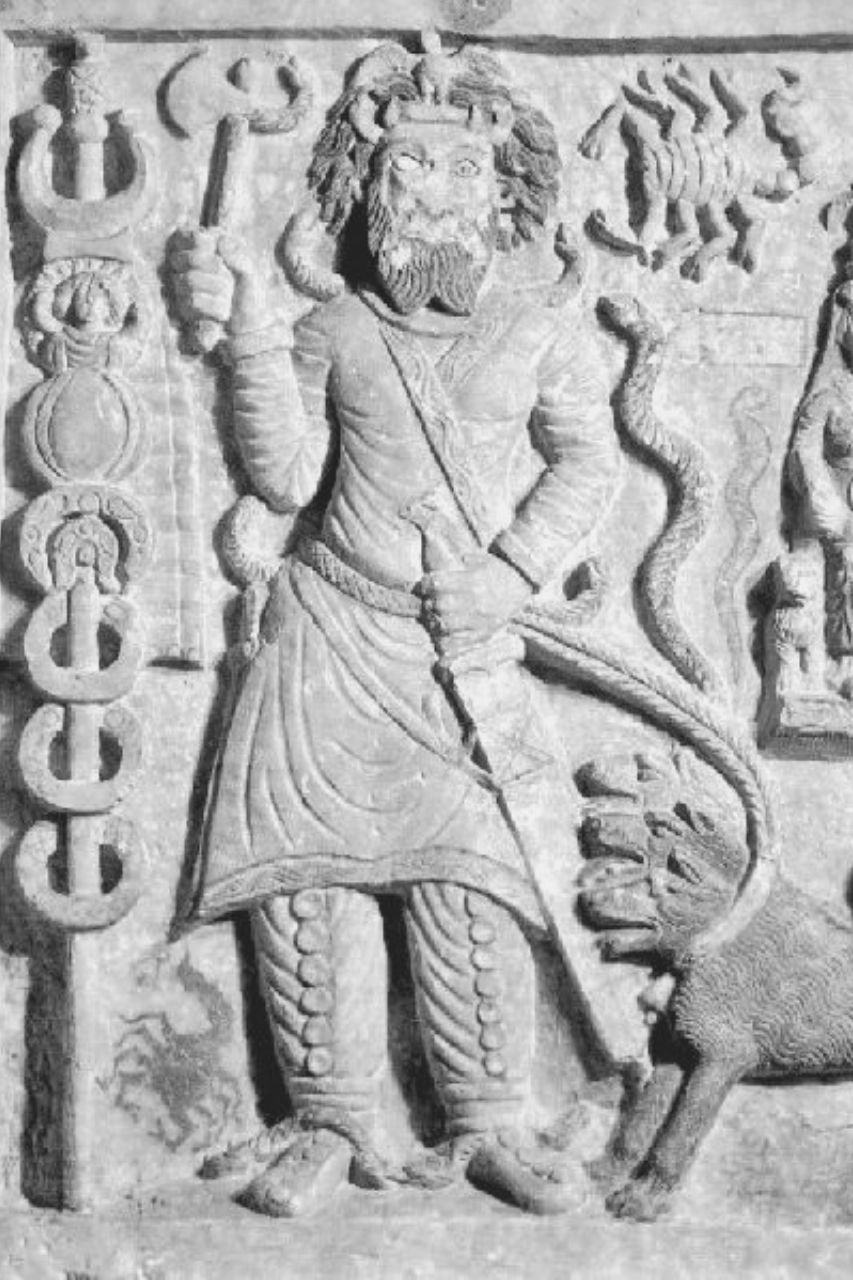Nergal and the Extraordinary Soul’s Journey to the Afterlife
The thought of Nergal as the god of death has been an extremely frightening idea for every man in ancient Mesopotamia. You surely don’t want to talk about death or the afterlife or even give a hunch about the presence of Nergal, the Lord of the Underworld, in your daily life.
However, death is not frightening according to Nergal, the southern Mesopotamian people’s god of death, pestilence, and plague. On the contrary, death is just another journey to the afterlife, where you will not suffer nor be chastised.
Who is Nergal?
While Nergal symbolizes the inflicted demise of man, he is also associated with war in a legendary manner. For instance, he accompanied the king onto the battlefield to inflict death on the king’s foes.
Enemies escaped as fast as they could when they heard about the presence of Nergal in times of battle. You could perhaps believe this happened because of his horrible appearance.
Aside from his terrifying manifestation, Nergal is also endowed with supernatural skills or demonic attributes to frighten men, particularly those he disliked. Nergal is also identified with the Seven Gods, who are emissaries of death and extermination. You might want to know that Nergal, the deity of disease, is a purveyor of demons and diseases who is craving to devour every man.
The Myth of Nergal: Origins and Legends
Incantations pertaining to Nergal first appeared as prayers to Meslamtaea, the god of the underworld, in the city of Kutha. Later, his cult combined with that of the god of death, Erra.
The famous son of Enlil and Ninlil, Nergal was known as a womanizer, so he’s been associated with several spouses, such as Las, Mamma, Ninsubur, Admu, and Ereshkigal.
With the latter, he finally found some stability in the last part of his life. These ladies were deities or goddesses who were attracted to his advances. His siblings include Nanna, Ninurta, Ninazu, Enbilulu and Pabilsag.
The Encounter of Nergal and Ereshkigal
According to the legend, the love story of Nergal and Ereshkigal started due to the offense made by Nergal to Namtar, the trusted minister of Ereshkigal. There was a banquet in heaven and Ereshkigal’s portion was to be sent to her through Namtar. While in heaven, Namtar, the great vizier of the goddess of the underworld, was ignored by Nergal in front of other gods.
This misdemeanor did not miss the eyes of other deities, and Nergal was punished to go down to the underworld and apologize for the misconduct that he deliberately made to Namtar. While he was in the underworld, he was enticed by Ereshkigal. Although he’s a god, he also had sexual desires and weaknesses, just like humans.
They made love for six days, and Ereshkigal immersed herself in the romantic arms of Nergal. Nevertheless, while she was sleeping, the god of war abandoned her by running back to heaven.
Blinded by her carnal desire for Nergal, the goddess of the underworld asked her messengers to clean up the cold and dreary cave beneath the earth for a royal wedding of two gods. Nobody moved because they didn’t dare to say that Nergal was gone, as the messengers were afraid of Ereshkigal’s wrath.
The Abandonment of Ereshkigal
Upon learning of Nergal’s desertion, the goddess started wailing and grieving with her loud voice that reached the heavens. She mourned deep in her heart and started complaining about her unfortunate life in the darkness; something she did not choose but was given to her without her consent.
Out of pity, the gods didn’t accept Nergal in the heavens, and the gates of divine abode were locked to prevent his coming. The gods all agreed that being rude to the goddess of the underworld was a colossal mistake, and abandoning Ereshkigal was a fatal act from a respectable god. He was given no choice but to go back to Ereshkigal in the underworld and stay there for six months each year.
Full of resentment, Nergal returned to the underworld. Upon his return, he grabbed the royal throne from Ereshkigal and appointed himself the king.
Despite this, you can imagine the delight of Ereshkigal upon the return of her beloved! This ended in another round of intimacy, which marked their role as co-rulers of the underworld, making him the real Mesopotamian god of death.
However, you can say that Nergal was set up in this relationship out of mercy to Ereshkigal, who was locked up in the underworld for life. At any rate, the union of these gods paved the way toward a harmonious reconciliation of the northern and southern parts of Mesopotamia in the past.
Nergal’s Place of Cult
All gods and goddesses have their respective places of cult and worship. These are distinct places for the gods to establish their throne and enjoy the offerings of the people. Nergal’s center of worship is in Kutha. Some reports have also shown secondary places of worship for Nergal in Dilbat, Isin, Uruk, and Nippur.
Kutha is the capital of Irkalla, the underworld, and it’s a place of prayers for the dead. Some sources identified Nergal with Kutha, calling him by the name of the city. Even the Hebrew Bible mentioned his name as a god of the city of Cuth or Cutha. In other words, Nergal’s existence is acknowledged by most religious sources.
Nergal and His Symbols
You can compare Mesopotamian mythology with Greek and Roman myths, which presented their gods with symbols and respective duties. Symbols are especially crucial for the gods to show who they are compared to other deities.
Nergal’s symbols include a mace with a lion’s head. He is also recognized as a bull. He was a contemporary of Irra — Meslamtaea in the Sumero-Akkadian pantheon — the god of parched earth and war.
Mesopotamian god Nergal was someone who restored the dead back to life. Only later was he recognized as the god of pestilence, famine, and desolation and the ultimate god of plague in the ancient world.
In the underworld, he is presented as a god surrounded by demons. You might imagine his presence as a male figure resembling a lion, carrying a scimitar with a fearful head of a lion.
All his symbols pertain to his capacity to provoke enmity. Nonetheless, Nergal is also a god of conscience, as portrayed when he returned to the underworld and be reconciled with Ereshkigal, knowing that abandoning her was a transgression unworthy of a god.
Attributes of Nergal
Nergal has been described in various ways, and his attributes were carefully acknowledged by people and priests in the ancient world. Some say that Nergal has a resemblance with the solar deity, Shamash. He is portrayed in colorful myths as a god of pestilence.
Hence, he also exemplifies the sun and the summer solstice as an agent of catastrophe, while high summer represents a lifeless stage in the annual revolution of time. As a demon of pestilence, he is in command if destruction is called for. It is his forte to annihilate anyone, and he has all the demonic creatures to devour anyone if needed.
In the underworld, he sits at the throne with his consort, Ereshkigal, the goddess of death. He stands at the head of a shrine to oversee the dead gathered in an underground region called Irkalla. It is his duty to just keep an eye on the dead people in the cave of death, but not to harm them.
In the Mesopotamian underworld, dead people are assembled to live there forever, but they are not punished physically. They are not allowed to go beyond the gates of death because gods have regarded it as the point of no return. In short, all dead people, as well as gods who were sent there, could not ever go back to earth, nor enter proper death.
Nergal is also present in epithets, in which he is symbolized by a cock, a burner, the raging king, the furious, and the lord of the great dwelling. The last one symbolizes his role as the god of the underworld.
The Popularity of Nergal
Ancient Babylonians consulted the astral-theological world, wherein Nergal is associated with the planet Mars. Being recognized as the god of war and destruction, Nergal was associated with Mars, the red planet, as the Babylonians deemed fit. He was also related to Heracles, a Greek demigod, for his formidable strength and the god of war Ares — Mars in the Latin pantheon.
Numerous symbols and names have been associated with Nergal, including the Babylonian lion-headed colossi representing the guardians of temples. Its structure is quite impressive in size and artistic design.
You can notice that the name Nergal began to be popular in the Akkadian period. His legacy and power could be manifested among the Hurrians and the Hittites, who recognized him as Aplu, which meant “the Son of Enlil.”
He was also given homage when plagues spread across Egypt because the people thought that if he was the one who sent those plagues, then he had the power to eliminate them.
Due to his relationship with death, plagues, diseases, and demons, Nergal was more often feared than revered. While the people worshipped him and paid homage to his throne, they were careful to not frustrate him.
You could feel the people’s fear of his name because it’s related to the satanic world. Nergal was also compared to demons, particularly Satan. Many duties and symbols have been connected with him, but one of the most recent is his identification as the secret police in hell or an honorary spy for Beelzebub.
The Mesopotamian Underworld
People were aware of the Mesopotamian underworld, which is known as Kur or Irkalla and Kigal in Akkadian. It is described as a dark and dismal region in the deep part of the earth. The people camped in Irkalla eat and drink dry dust, except when their families on earth remember them and pour libation or offerings for the dead.
Nergal, the ruler of the underworld, with his consort Ereshkigal, the goddess of death, lived in a palace in Ganzir. They oversaw the seven gates of the underworld with the gatekeeper Neti.
Along with them were the god Namtar, the foremost messenger or divine attendant of Ereshkigal. Dumuzid, the god of shepherds, was present for half a year in the underworld, while his sister, Geshtinanna, was the scribe of the names of the deceased.
Nergal did not only take care of the dead; he was also present with a number of different demons, evil spirits, and satanic forces that hovered the air in Irkalla. They were invariably terrifying, including the child-devourer Lamashtu and the god Pazuzu as the demon god who dragged dead people to the underworld.
The Journey of a Soul to the Underworld
All souls after death would journey to the underworld, and you should remember that kindness or generosity done on earth would not have any bearing on someone’s destiny in the land of the dead. There’s no judgment there, except when they are announced dead by Ereshkigal.
You must know that a person’s support depends on the process of their burial. If people were buried properly, they would have more chances of thriving in the underworld. On the contrary, those who were given miserable burials could not expect to be treated well.
The gates of the underworld were in Zagros mountains. Worshippers believed there was a staircase going to the deep and cold part of the underworld solely for the dead.
Entering the underworld, regardless of whether a person was alive or dead, would mean no return. Fascinatingly, even gods are prohibited from entering the underworld.
Nergal’s Relation with Other Gods
Nergal has been associated with the names of other gods. The syncretism of his name with other deities is carefully accepted and understood by people. For instance, the god Erra has been used in relation to Nergal’s name.
Resheph, invariably pertained to Nergal, was popular in Ebla and Ugarit. Alongside these amalgamations of names, Nergal came had a special relation with Astabi, Simkut, the Elamite god, and the planet Mars.
The deity Lagamar was also connected with him. In line with Greek mythology, Nergal was associated with Heracles and the city of Tarsos.
Nergal’s Vizier
Egyptian pharaohs ruled the people with their vizier or sukkal. Negar’s vizier was Uqur, whose authority was similar to a sword or a divine weapon. However, over time his power was lessened, and he was substituted by Ishum, the god of night watchmen and heralds. Aside of him, Namtar or Ninshubur was likewise called Nergal’s vizier.
The Epic of Erra
Epics are narratives of adventure, heroism, and valor. Mesopotamian mythology is also famous for gargantuan epics about gods and their divine adventures in heaven and on earth. Nergal and Erra are both related to the protagonists in these stories of heroism of ancient times.
A famous epic started with Nergal’s plan to wage war. Two opposing poles were influencing him. His weapons craved war, while his vizier, Ishum, wanted to stop him. To retain the honor of his name, Nergal chose to dismiss the latter. Eyeing at Babylon, he employed sorcery to convince Marduk to go out of the temple.
It was a good start for him to initiate his campaign, but Marduk returned quickly. He opened his case with a long argument, giving the gods a reason to empathize with him and remember him.
The gods were affected by his speech, and the universe was turned into galactic chaos. Ishum pleaded for Nergal to stop, but he didn’t listen. Instead, Nergal used inflamed words, causing Marduk to leave his abode again.
Nergal declared his goal to eradicate the cosmic order, but Ishum stopped the bloodshed. He did it by initiating a war on the people of Mount Sharshar. Ishum’s revolution was presented in another way to Nergal, who was satisfied with his vizier and the gods’ acceptance of his rage.
He asked Ishum to spread the news that he was done with his rage, and he was full of gratitude that he didn’t destroy the whole world and was instead able to come back to his senses.
Conclusion
Nergal played a vital role in the lives of the ancient people in Mesopotamia. With several titles associated with his name, Nergal was most prominent as the god of the dead and keeper of the underworld. He was the son of Enlil and Ninlil and was also known as the god of pestilence, diseases, and war.
He was the most powerful in his abode in Irkalla, the seat of his cult. Mesopotamian mythology would be less substantial without the power of Nergal, who had tremendous authority over the lives of people who feared death.
Due to his pride, he was punished by the gods to go to the underworld. His carnal desire made him vulnerable to Ereshkigal’s seduction. Interestingly, with his humility, he came back to the underworld and lived out the punishment given to him.
The works of Nergal as the purveyor of diseases, pests, and war were clearly recorded in the annals of Mesopotamian history. Nobody could ever defy his power because the gates of the underworld were in his hands. Men know that we are born to start a journey on earth that ends in the afterlife, the place of no return.













